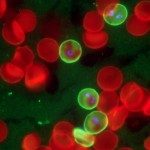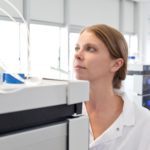Lien vers Pubmed [PMID] – 25876066
PLoS Pathog. 2015 Apr;11(4):e1004835
The success of S. pneumoniae as a major human pathogen is largely due to its remarkable genomic plasticity, allowing efficient escape from antimicrobials action and host immune response. Natural transformation, or the active uptake and chromosomal integration of exogenous DNA during the transitory differentiated state competence, is the main mechanism for horizontal gene transfer and genomic makeover in pneumococci. Although transforming DNA has been proposed to be captured by Type 4 pili (T4P) in Gram-negative bacteria, and a competence-inducible comG operon encoding proteins homologous to T4P-biogenesis components is present in transformable Gram-positive bacteria, a prevailing hypothesis has been that S. pneumoniae assembles only short pseudopili to destabilize the cell wall for DNA entry. We recently identified a micrometer-sized T4P-like pilus on competent pneumococci, which likely serves as initial DNA receptor. A subsequent study, however, visualized a different structure–short, ‘plaited’ polymers–released in the medium of competent S. pneumoniae. Biochemical observation of concurrent pilin secretion led the authors to propose that the ‘plaited’ structures correspond to transformation pili acting as peptidoglycan drills that leave DNA entry pores upon secretion. Here we show that the ‘plaited’ filaments are not related to natural transformation as they are released by non-competent pneumococci, as well as by cells with disrupted pilus biogenesis components. Combining electron microscopy visualization with structural, biochemical and proteomic analyses, we further identify the ‘plaited’ polymers as spirosomes: macromolecular assemblies of the fermentative acetaldehyde-alcohol dehydrogenase enzyme AdhE that is well conserved in a broad range of Gram-positive and Gram-negative bacteria.




